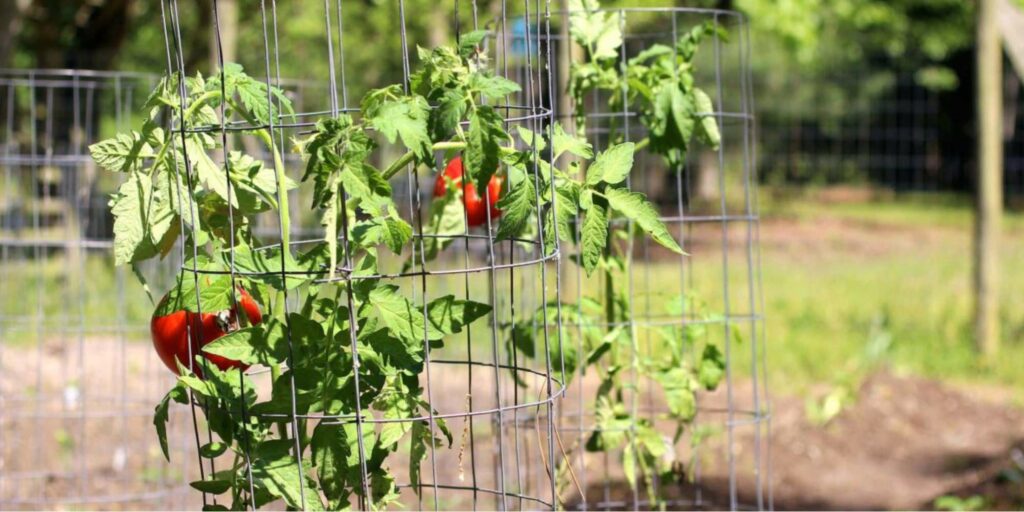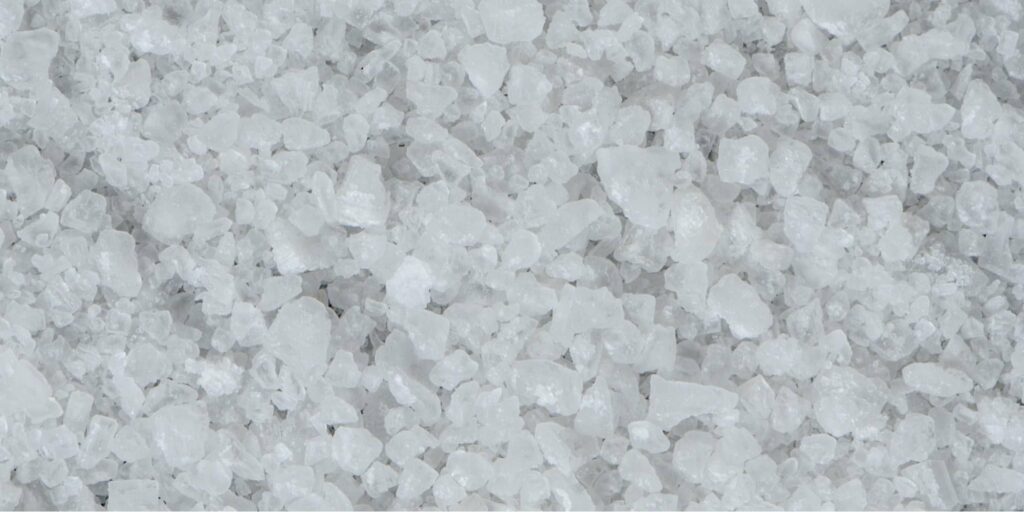
Dreaming of growing big juicy tomatoes? A huge part of it is dependent on the proper application of the right type of fertilizer, which we’ll guide you through today.
What do I need to remember about fertilizing tomatoes?
Here’s a quick glance on all you need to know about fertilizing tomatoes:
| Stages | After transplant | Before fruiting |
| Before fertilizing | Water your tomatoes to prepare their roots to absorb adequate amounts of nutrients | Water your tomatoes to prepare their roots to absorb adequate amounts of nutrients |
| During fertilizing | Apply a balanced fertilizer with equal nitrogen, phosphorus, and potassium (NPK) content to the soil while avoiding getting them on parts of the plants. | Apply a fertilizer with higher amounts of phosphorus and potassium content to the soil while avoiding getting them on parts of the plants. |
| After fertilizing | Water your tomato plants well. | Water your tomato plants well. |
Note that tomatoes are heavy feeders – so apply fertilizers regularly but moderately to prevent adverse reactions.
Read on below as we go into more detail on each of these stages.

A Quick Intro to Fertilizers
Fertilizers are natural or synthetic compounds containing chemical elements that help enhance plant growth and productivity. Fertilizer is often applied to the soil to improve its fertility, replace lost elements, or add deficient chemical components.
Natural or organic fertilizers come in the form of manure, compost, seaweed, and other sources that are naturally occurring.
Synthetic or inorganic fertilizers are produced from gasses and minerals through a chemical process from mostly naturally sourced materials.
Fertilizers can come in liquid, powder, and granular forms. Liquid fertilizers are concentrated and must be diluted with water prior to application.
Powder fertilizers also require water to activate. Granular fertilizers can be easily applied directly over the topsoil to allow them to be absorbed gradually over time.
Additionally, liquid fertilizers wash off easily and will need frequent reapplications. Powder and granular fertilizers tend to last longer and will need fewer reapplications.

Do I really need to fertilize my tomatoes?
If you want to grow and harvest large, juicy, and healthily plump tomatoes, then yes. Otherwise, you can allow your tomato plants to produce substandard fruits.
A basic fertilizer schedule will be your most important feeding regimen for your tomatoes. By giving them what they need when they need it, your gardening experience is bound to be more fun and productive.
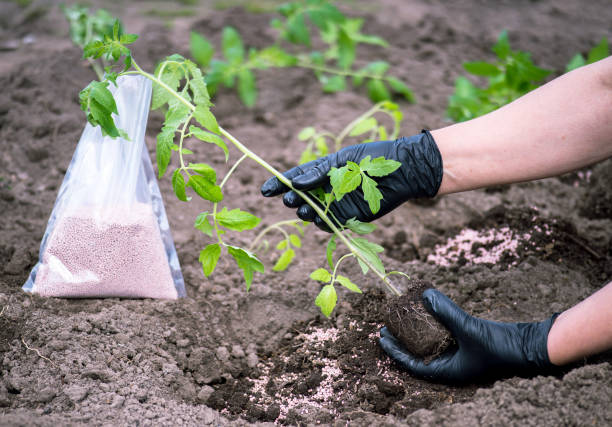
Feeding Tomatoes
Tomatoes are heavy feeders. This means that they take in more nutrients from the soil compared to other plants. Other heavy feeders include corn, beets, and plants in the cabbage family.
This does not mean that you have to give them copious amounts of fertilizers though. Heavy feeders mean that they consume more nutrients regularly but will still react negatively if given too much.

Avoid Excess Fertilizers
When given excess fertilizers, tomato plants can exhibit one or more of the following symptoms:
- Yellow leaves
- Wilted leaves
- Limp stalks
- Brown leaf margins and tips
- Leaf shedding
- Unusually slow growth
- Seedling death
To avoid this, you must remember to fertilize them regularly at the right amount.
Schedule Fertilization
Tomato plants need fertilizers to produce juicy plump fruits, but too much can damage them. The trick is to provide them with the right amount of nutrients at the right time, no more and no less.
Tomato plants need to be fertilized during two stages. These are the time when they are just planted, and when they are about to bear fruit.
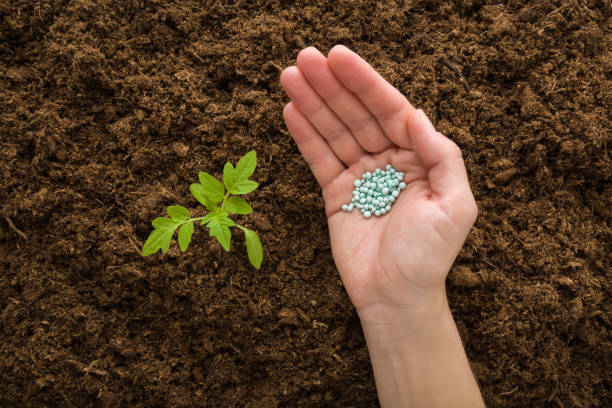
After Transplant
Many gardeners prefer applying a dose of mild to medium-strength organic fertilizer to newly transplanted seedlings. It is believed that the added boost of nutrients will help them adjust to their new homes.
However, it should be noted that excess fertilizers can have the opposite effect. Instead of helping the plants grow, excess fertilizers can worsen transplant shock.
Here are a few tips to keep this from happening:
- Use a balanced organic fertilizer such as compost, worm casting, or bone meal.
- Mix the organic fertilizers with the soil at the bottom of the planting hole.
- You can also apply your fertilizer a month after the transplant.
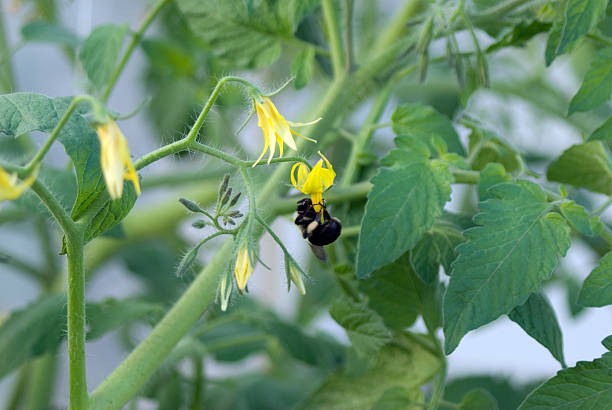
Before Fruiting
For the second round of fertilizer application, check your plants for flowers. Fruits normally appear after flowering, so once your tomato plants begin to flower then it is time to slowly start fertilizing.
Here are a few tips to remember:
- Late-season fertilizer applications can harm your plants, so fertilize early.
- Apply your fertilizer moderately but consistently.
- Stop fertilizer applications at the moment your tomato plants begin to fruit.
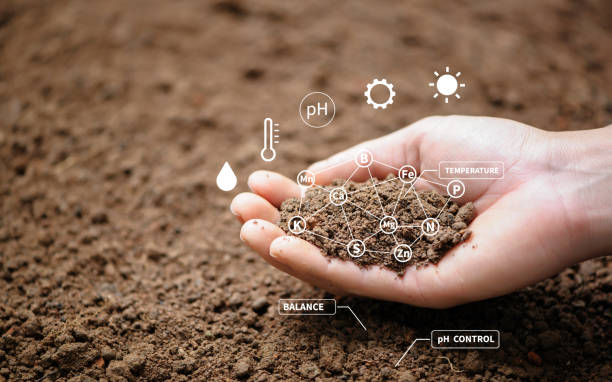
Use the Right Fertilizer
Every gardener will possess a preference for a certain type of fertilizer over another. While commercial fertilizers can be easily purchased, gardeners are increasingly inclined to make their own.
Whichever type you prefer, it is essential that you understand the NPK value of your fertilizer. Additionally, your fertilizer should contain micronutrients like magnesium and calcium to promote vigorous growth and fruit production.
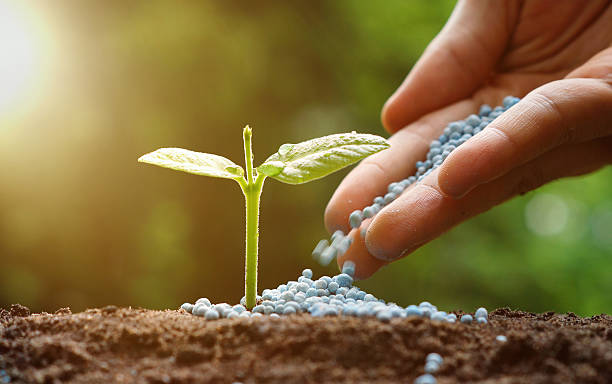
After Transplant
While in the growing stage, your tomato plants will benefit from fertilizers high in nitrogen. If you want to be certain, you can order a soil test to determine if your soil has balanced levels of NPK.
For soils with balanced amounts of NPK, you can apply a balanced fertilizer with an NPK value of 10-10-10 during the early growing stages. For soils with a lower amount of nitrogen, use a fertilizer with an NPK value of 10-5-5.
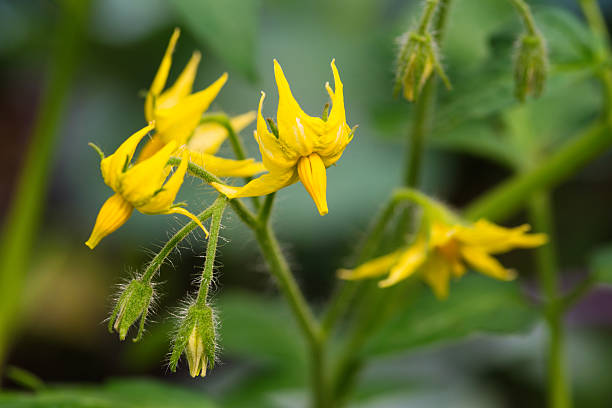
Before Fruiting
When your tomato plants start to flower, the last thing you want to do is provide them with nitrogen. This is because nitrogen fuels foliage growth and will not be useful during the fruiting stage.
Before your tomato plants start to fruit, apply fertilizers high in phosphorus and potassium, such as those with an NPK value of 5-10-10. This helps direct your plant’s energy towards producing fruits instead of leaves.
If your soil has low amounts of calcium and magnesium, you’ll have to add them to help your plant absorb nutrients better. Crushed eggshells add calcium to the soil while Epson salt (row 8 – epsom salt for tomatoes) alleviates magnesium deficiency.
This is why a soil test should be conducted. Soil tests help you determine the nutrient contents of your soil so you will be aware if any element is lacking or in excess.
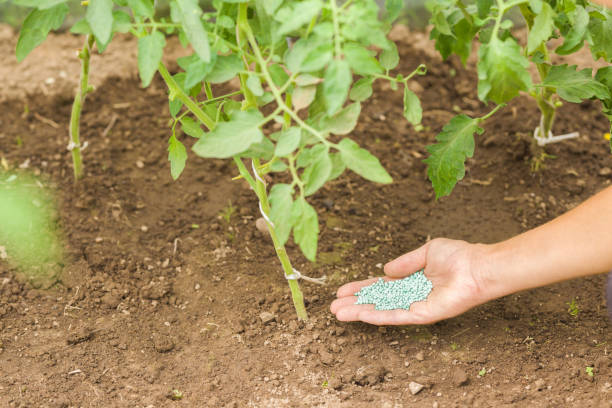
How To Apply Fertilizer
Fertilizer applications will depend mostly on the type of fertilizer you prefer to use. Here are some reminders when using the three types of fertilizers.
Prior to Application
It is important to water the soil of your tomato plants prior to fertilizer application. This helps the roots open up to receive nutrients more readily compared to dry soil.
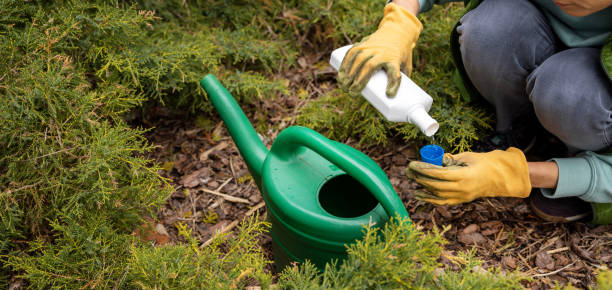
Applying Liquid Fertilizers
Liquid fertilizers will always have instructions on the label. Follow the directions to dilute the concentrate.
This will prevent your plant from experiencing root shock or root burns, even when your liquid fertilizer is naturally sourced. As with most fertilizers, a diluted dose is better than an excessive one.
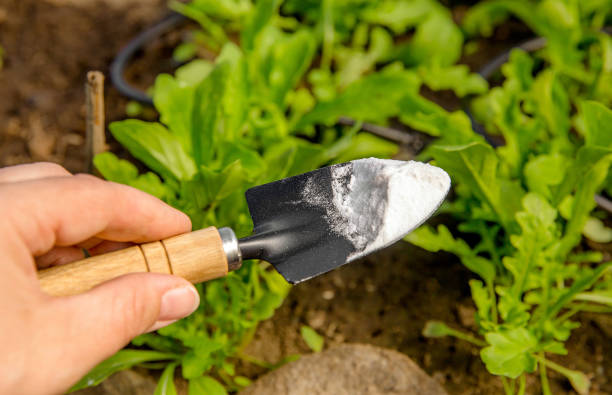
Applying Powder Fertilizers
Simply sprinkle some powder fertilizers on the soil surrounding the plant. Gently work it into the soil, or as directed by the instructions on the package.
Keep the fertilizer away from the stem of the plant but near enough to surround the roots underneath. Water the soil slowly but deeply after powder fertilizer application.
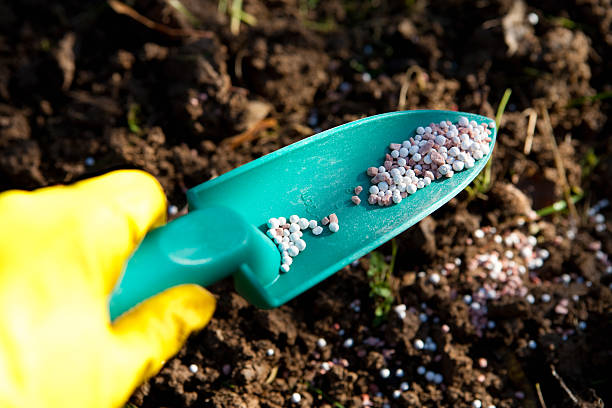
Applying Granular Fertilizers
Just like powder fertilizers, you can work granular fertilizers into the soil. Both the powder and granular forms of fertilizer release nutrients gradually into the soil, hence the term “slow-release fertilizer”.
Read the instructions on the back of the package to determine how often you should reapply. This will help keep your soil full of nutrients that feed your tomato plants regularly.
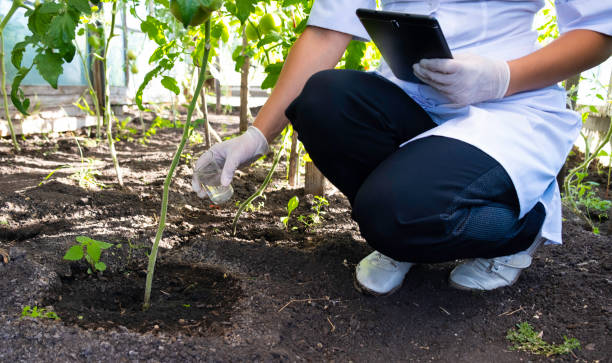
Conclusion
Fertilizers are diverse, ranging from organic to inorganic with many variations in between. Understanding the right fertilizers for your tomato plants will take your personal preferences, soil conditions, and climate into consideration.
Here are a few reminders about fertilizers for your tomatoes:
- It is always best to use a weaker dose over a high-strength dose.
- Apply fertilizers only when necessary.
- Fertilizer moderately but regularly.
- Keep a close check on your plants and adjust your dose accordingly.
Growing and fertilizing tomato plants is easier than you think. Now that you know how to fertilize your tomato plants, you can master the art of producing plump juicy tomatoes regardless of the type of fertilizer you use!
That just about sums up our take on fertilizing tomatoes the right way.
Got any tips you’d like to share? Send them our way by dropping a note in our comments section!



